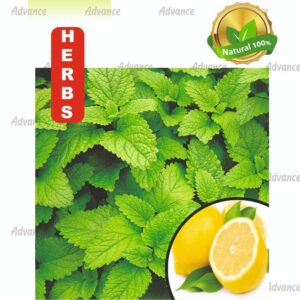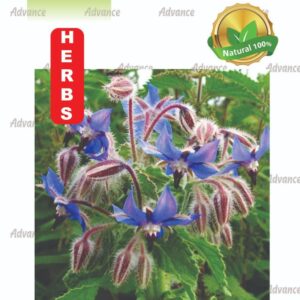Mint (Mentha) is a popular and aromatic herb that comes in various varieties, including peppermint and spearmint. While mint is commonly propagated through cuttings, it is possible to grow it from seeds. Here’s a guide on how to grow mint from seeds:
Growing Mint from Seeds:
1. Selecting Mint Seeds:
- Choose high-quality mint seeds from a reputable supplier. Consider the specific variety of mint you want to grow, such as peppermint or spearmint.
2. Timing:
- Mint seeds can be started indoors in late winter or early spring. Mint is a perennial herb, and starting seeds early allows for healthy plants by the time the growing season begins.
3. Seed Starting Mix:
- Use a well-draining seed starting mix or a combination of potting soil and perlite. Mint prefers soil that retains some moisture but is not waterlogged.
4. Sowing Seeds Indoors:
- Fill seed trays or small pots with the seed starting mix. Sow mint seeds on the surface, pressing them gently into the soil. Lightly cover the seeds with a thin layer of soil.
5. Watering:
- Keep the soil consistently moist but not waterlogged during the germination period. Mint seeds typically germinate within 1 to 2 weeks.
6. Light:
- Mint seeds require light for germination. Place the seed trays in a location with bright, indirect sunlight or provide supplemental light with fluorescent or LED grow lights.
7. Transplanting:
- Once the mint seedlings have developed several true leaves and are large enough to handle, transplant them into larger pots or directly into the garden. Space the plants about 18 inches (45 cm) apart.
8. Outdoor Planting:
- Choose a location with well-draining soil for planting mint. Mint is a vigorous spreader, so consider planting it in containers or in an area where its growth can be controlled.
9. Watering:
- Mint prefers consistently moist soil. Water when the top inch of the soil feels dry. Mint can tolerate some drought but benefits from regular watering.
10. Mulching:
- Apply a layer of organic mulch around the base of the mint plants to help retain soil moisture, regulate temperature, and suppress weed growth.
11. Harvesting:
- You can start harvesting mint leaves once the plants are well-established. Harvest by cutting stems just above a pair of leaves. Regular harvesting promotes bushier growth.
12. Pruning:
- Prune mint regularly to prevent it from becoming too leggy and to encourage fresh growth. Pinch off the tips of the stems to promote branching.
13. Propagation:
- Mint is easily propagated through division. Dig up the plant, separate the clumps, and replant them in new locations or containers.
14. Pests and Diseases:
- Mint is generally resistant to pests and diseases. However, keep an eye out for issues like aphids or mites, especially when grown indoors.
Growing mint from seeds is a cost-effective way to establish a mint garden, and it allows you to explore various mint varieties. Mint is versatile and can be used in teas, culinary dishes, and for its refreshing aroma. Be mindful of its spreading nature, and consider containing it to prevent it from taking over your garden
Mint is a versatile herb with a variety of uses, both culinary and medicinal. Here are some common applications:
Culinary Uses:
- Teas:
- Mint is widely used to make refreshing herbal teas. Peppermint and spearmint are popular choices for tea, and the leaves can be used fresh or dried.
- Culinary Garnish:
- Mint leaves make an attractive and flavorful garnish for a variety of dishes, including desserts, salads, and savory dishes.
- Salads:
- Mint adds a fresh and aromatic element to salads. It pairs well with fruits, vegetables, and grains.
- Sauces and Dressings:
- Mint can be incorporated into sauces, dressings, and marinades for a burst of flavor. It complements both sweet and savory dishes.
- Desserts:
- Mint is often used in desserts such as ice cream, sorbet, cakes, and chocolates. It adds a cool and refreshing flavor.
- Beverages:
- Mint is a popular ingredient in various beverages, including cocktails, lemonades, and mojitos.
- Middle Eastern Cuisine:
- Mint is a key ingredient in Middle Eastern cuisine, used in dishes like tabbouleh and mint tea.
Medicinal Uses:
- Digestive Aid:
- Mint has been traditionally used to help soothe indigestion and alleviate digestive discomfort.
- Relief from Nausea:
- Peppermint is known for its ability to ease nausea. Peppermint oil or tea may be used for this purpose.
- Headache Relief:
- The aroma of mint is believed to have a calming effect and may help alleviate headaches.
- Respiratory Health:
- Mint can be used to make inhalations or teas to relieve respiratory congestion and promote easier breathing.
- Anti-inflammatory Properties:
- Mint has anti-inflammatory properties and may be used topically or consumed to help reduce inflammation.
- Antimicrobial Properties:
- Mint possesses antimicrobial properties that may contribute to oral health. It is a common ingredient in toothpaste and mouthwash.
- Stress Relief:
- The aroma of mint is often associated with stress relief and relaxation. Essential oils or mint-infused products are used for aromatherapy.
Other Uses:
- Natural Pest Repellent:
- Mint plants can act as natural pest repellents. Planting mint around the garden may help deter certain pests.
- Floral Arrangements:
- Mint leaves can be used in floral arrangements to add fragrance and a touch of greenery.
- DIY Household Cleaners:
- Mint leaves or essential oil can be used to create natural household cleaners due to its pleasant scent and antimicrobial properties.
It’s important to note that while mint has numerous benefits, excessive consumption may cause adverse effects in some individuals. Additionally, mint has a tendency to spread rapidly, so it’s often recommended to grow it in containers to control its growth in the garden. Always consult with a healthcare professional before using mint for medicinal purposes, especially if you have specific health conditions or are pregnant.















Reviews
There are no reviews yet.